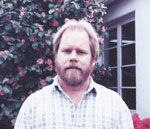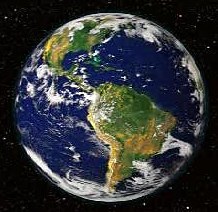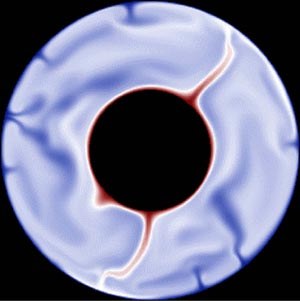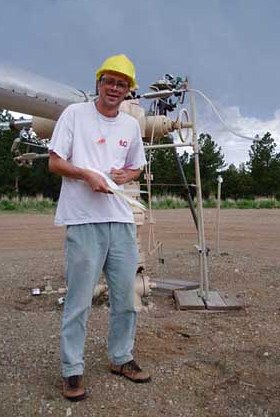The constant attrition of the Solar wind implanted primordial volatiles, such as water vapour and hydrogen gas, in the dust and rocks that eventually formed our planet’s outer layers, according to UK researchers.
Geochemist Christopher Ballentine of the University of Manchester, Bernard Marty of the Petrography and Geochemistry Research Centre in Nancy, France, Barbara Sherwood-Lollar of the University of Toronto, and Martin Cassidy of the University of Houston, Texas, have used mass spectrometry to measure the ratios of isotopes of the noble gases neon and helium in gas emerging from the upper mantle beneath present-day New Mexico.

Chris Ballentine
Locked within these ratios are clues about the Earth’s formation and its evolution. The ratios observed by Ballentine and colleagues, however, point to an intriguing conclusion. The ratios strongly resemble the ratios determined in meteorites that are known to have been affected by ions originating in energetic Solar particles. Remarkably, the results indicate that accretion of the outer portions of Earth was dominated by aggregated solids that had been heavily irradiated by Solar ions, explains independent expert David Graham of the University of Oregon in Corvallis.
Previously, researchers had found that volatiles from the deep mantle appeared to be absorbed from an early atmosphere by the molten ocean of magma covering the Earth’s surface before it cooled. Ballentine explains, This is probably the only remnant of Solar nebular gas in the deep Earth that survived the massive moon-forming event thought to have been caused by an impact with a planet similar in size to Mars.

David Graham
Indeed, Ballentine’s new data suggest that there has been very limited exchange between the portion of the mantle that forms new ocean crust at mid-ocean ridges and the source of ocean island basalts, which may be in the deepest regions of the mantle. The only conclusion that can be drawn given the noble gas ratios measured and their similarity to meteorite measurements is that the volatiles in the outer layers of the Earth originate from dust and collisions with planetesimals, probably after moon formation, rather than by capture of Solar nebula gas from an early atmosphere.

Barbara Sherwood-Lollar

Noble gases reveal details about the Earth’s beginnings (Credit: NASA)

A simulation of the Earth’s mantle shows hot plumes (red) and material being subducted (blue) (From van Keken and Ballentine, 1998, 1999)

Team member Greg Holland collecting volcanic carbon dioxide from a natural gas field in Colorado in 2003. Similar samples from the Bravo Dome gas field in New Mexico provided noble gas samples for the present geochemical research
Further reading
Nature, 2005, 433, 33
http://dx.doi.org/10.1038/nature03182
Chris Ballentine’s Homepage
http://www.seaes.manchester.ac.uk/aboutus/staff/staffprofile.php?id=4
David Graham’s Homepage
http://www.coas.oregonstate.edu/index.cfm?fuseaction=content.search&searchtype=people&detail=1&id=541&show=main
Barbara Sherwood-Lollar’s Homepage
http://webcan.geology.utoronto.ca/Members/sherwood_lollar/sherwood_lollar
Suggested searches
Solar wind
mantle
mass spectrometry